|
|
|
Tunisian Campaign
The final campaign to defeat the Axis armed forces in North Africa began when the Allied forces in Algeria reached the border with Tunisia on the 16th November 1942, and ended with the surrender of all Axis forces on the 13th May 1943.
Tunisia was controlled by the Vichy French government and was officially neutral. However because Sicily was close to Tunisia the Allies expected that the Axis would move to occupy the country as soon as they heard of the Torch landings in Algeria in November 1942. It was therefore intended that the Allied forces in Algeria would move swiftly east to enter the country. In the event, despite only limited French opposition in Algeria, they made much slower progress than expected on dreadful roads and against Luftwaffe attacks, and the Germans moved first. By the 9th November there were reports of German aircraft arriving at Tunis and during November the Axis established a secure base at Tunis and managed to deliver a considerable quantity of supplies through the port. By the end of the month, three German divisions including the 10th Panzer Division, and two Italian infantry divisions, had arrived to strengthen Rommel's army. A very effective minefield was laid off the coast to prevent the Royal Navy from forming a blockade.
On the 17th November 1942 the US and British troops approaching from Algeria encountered a German/Italian force at Djebel Abiod, marking the start fo the Battle for Tunisia. The fight at Djebel Abiod continued for nine days. A second front was opened up on 26th November further south at Medjez el Bab, but they were ambushed from well prepared defensive positions. After three weeks of fighting the Allied units had made no progress and they dug in along a defensive line just east of Medjez. Reinforcements were brought forward until the Allied force reached 135,000 men. Although the assessment was that the Axis forces numbered about 200,000, an attack began the afternoon of 22nd December. By the 26th December the Allies had been forced back to the positions they had held two weeks earlier, having suffered 20,743 casualties.
To the east Erwin Rommel had made plans for forces retreating through Libya to dig-in on the defunct French fortifications of the Mareth Line. On 23rd January 1943 the Eighth Army took Tripoli, but Rommel had virtually abandoned the city and his army was already well on its way to the Mareth line.
Five days earlier on the 18th January 1943 it was the Axis forces which had taken the initiative and tried to force the Allied troops on the Algerian frontier back. After 5 days they had moved the line forward by 35 miles. After a pause, Rommel ordered a further push on the 19th February through the Kasserine Pass to the south, which, if successful, would have brought his panzer division around behind the Allied front line. Both sides again suffered heavy losses without a clear outcome, although the Allies lost the use of a number of airfields and had to pull back. But on the 23rd February news reached Rommel that the Eighth Army had reached the Mareth line and was threatening his defences to the east. The Axis attack forces from Kasserine turned back and reached the Mareth line on 25th February.
On 26th February General Arnim, believing that Allies had reinforced their forces at the Kasserine Pass by taking them from the north, launched an attack towards Algeria along the coast. Fighting lasted until 5th March in terrible weather conditions, and then the operation was called off by Arnim. The following day, 6th March, Rommell atempted to break the Eighth Army defenses to the east. The Axis attack was repulsed with massed artillery fire and 55 Axis tanks were knocked out.
With the failure of both attempts, Rommel decided that the only way to save the Axis armies would be to abandon the campaign and evacuate North Africa. On 9th March he travelled to Italy and, having failed to get support from Mussolini, he went on to see Adolph Hitler in person, but he was relieved of his command and replaced by General Arnim.
Although the Axis forces had been beaten off on both eastern and western fronts, it was not until the 25th March 1943 that the Allies regrouped and resumed their offensive. Meanwhile the Italians had, belatedly, stepped up their efforts to supply the Axis armies. The Royal Navy was now making an effective shipping blockade of the Port of Tunis, but a considerable number of flights was now taking place between Italy and Tunisia, mostly by night, both bringing in supplies and evacuating troops. The USAAF and RAF were ordered to make an all-out effort to break the Axis air operations. The operation, codenamed "Flax", began on the 5th April 1943 and lasted three weeks, including an air battle on the 18th April known as the Palmsonntag Massaker ("Palm Sunday Massacre") due to the number of troop transport aircraft shot down while evacuating German Army forces. The air operation continued until 27 April. During Operation Flax the Luftwaffe lost over 2,400 aircraft.
During the night of 19/20 April the Eighth Army captured Enfidaville to the east. On the morning of 22nd April the First Army made a feint attack to the south before throwing their main force forward from the west. Even at this late stage, the battle was fierce and it was 8 days before the Allied forces broke through the Axis defence line. On 30th April Montgomery transferred an Armoured Division and an Infantry Division from the Eighth Army to join the First Army in the west. The sudden increase in opposition broke the Axis resistance. On 7th May, British armour entered Tunis and American infantry entered Bizerte. Various isolated elements of the German/Italian forces surrendered over the following few days and on the 12th May Mussolini ordered General Messe, the last active commander of Axis forces, to surrender, which he did the following day bringing the North Africa Campaign to an end.
17th Nov 1942 Contact
21st November 1942 Move forward
22nd Nov 1942 In Action
29th Nov 1942 On the Move
29th Nov 1942 Report
30th Nov 1942 In Action
30th Nov 1942 Ground Gained
1st Dec 1942 In Action
1st Dec 1942 Postponement
3nd Dec 1942 Air Raid
4th Dec 1942 Death Trap
3rd December 1942 Move into Tunisia
5th Dec 1942 Orders
6th Dec 1942 Orders
7th Dec 1942 On the March
8th Dec 1942 Difficult Conditions
9th Dec 1942 Digging in
9th Dec 1942 Defensive Positions
10th Dec 1942 Recce
10th Dec 1942 Recce
11th Dec 1942 Recce
11th Dec 1942 Patrols
12th Dec 1942 Patrols
12th Dec 1942 Casualties
13th Dec 1942 News
13th Dec 1942 Platoon in Reserve
14th Dec 1942 Combat Group
14th Dec 1942 Platoon in Reserve
15th Dec 1942 Supplies
16th Dec 1942 Enemy Positions
17th Dec 1942 Orders
17th Dec 1942 Visit
18th Dec 1942 On the Move
18th Dec 1942 Patrol Sucessful
19th Dec 1942 Attack
20th Dec 1942 Enemy Aircraft
20th Dec 1942 Enemy Aircraft
21st Dec 1942 Conference
21st Dec 1942 Recce
22nd Dec 1942 Battalion HQ Moves
22nd Dec 1942 On the Move
23rd Dec 1942 Patrols
24th Dec 1942 On the Move
25th Dec 1942 Christmas
25th Dec 1942 Reliefs
25th Dec 1942 Observation Post
26th Dec 1942 In Reserve
26th Dec 1942 Attack Made
27th Dec 1942 In Reserve
27th Dec 1942 Parachutists
28th Dec 1942 Orders
28th Dec 1942 Enemy Active
29th Dec 1942 On the Move
30th Dec 1942 Move
30th Dec 1942 Stand by
31st December 1942 Ground attack
31st Dec 1942 Newsletter
31st Dec 1942 Supplies
1st Jan 1943 Training
1st Jan 1943 Aircraft Downed
2nd Jan 1943 Patrols
3rd Jan 1943 Patrols
4th Jan 1943 Patrols
4th January 1943 Consolidation
4th January 1943 Bombing raid kills airmen
5th Jan 1943 Under Fire
6th Jan 1943 Enemy Aircraft
7th Jan 1943 Patrols
8th January 1943 Fighter pilot killed
17th January 1943 Spitfire missing
17th Jan 1943 On the Move
18th January 1943 Killed over Tunisia
26th Jan 1943 Advance Party
27th Jan 1943 On the Move
28th January 1943 New command structure
2nd Feb 1943 Reliefs
3rd Feb 1943 Patrols
3rd February 1943 Move back into action
10th Feb 1943 Minefields
11th Feb 1943 Defence Force
13th Feb 1943 Water Tanks
13th Feb 1943 Difficult Position
20th Feb 1943 Heavy Shelling
21st Feb 1943 Defence
22nd Feb 1943 Into Position
23rd February 1943 Spitfire pilot killed
24th February 1943 Airman died
26th Feb 1943 Enemy Attack
27th Feb 1943 Attack Imminent
27th Feb 1943 Into Position
28th Feb 1943 In Action
28th Feb 1943 In Action
1st Mar 1943 Heavy Firing
1st Mar 1943 Infiltration
1st Mar 1943 Attack
1st March 1943. Pilot killed
2nd Mar 1943 Prisoners Taken
2nd Mar 1943 In Action
3rd Mar 1943 Attack Made
3rd Mar 1943 Withdrawal
3rd Mar 1943 Heavy Shelling
4th Mar 1943 Shelling
4th March 1943 Precision bombing
6th Mar 1943 Orders
7th Mar 1943 In Action
7th Mar 1943 Enemy Withdrawal
8th Mar 1943 Prisoners Taken
8th Mar 1943 Posiitions Held
8th March 1943 Move into Tunisia
9th March 1943 Into Tunisia
9th Mar 1943 Minefield
10th Mar 1943 Small Engagements
10th Mar 1943 Shelling
11th Mar 1943 Attack Made
12th Mar 1943 In Defence
13th Mar 1943 In Defence
14th Mar 1943 Enemy Aircraft
14th Mar 1943 Reliefs
15th March 1943 Preparation for attack
16th Mar 1943 Orders
16th Mar 1943 Postings
17th Mar 1943 Counter Attack
17th Mar 1943 In Action
17th Mar 1943 Report
17th Mar 1943 Recce
18th March 1943 Into Tunisia
18th Mar 1943 Withdrawal
18th Mar 1943 Attack Made
18th Mar 1943 Heavy Shelling
19th Mar 1943 Withdrawal
20th March 1943 Spitfire lost
21st Mar 1943 Counter Attack
21st March 1943 Moving on
25th Mar 1943 Reliefs
26th Mar 1943 Conference
27th Mar 1943
28th March 1943 Polish Flight goes into Action
29th Mar 1943 In Reserve
31st Mar 1943 Advance
Mar 1943 Defence
April 1943 Spitfires
1st Apr 1943 Advance
1st Apr 1943 Enemy Aircraft
2nd Apr 1943 On the March
2nd Apr 1943 Advance
2nd April 1943 Three Bf109s shot down
3rd Apr 1943 On the Move
3rd April 1943 On the move
4th Apr 1943 At Rest
4th April 1943 Dogfight in Tunisia
5th Apr 1943 At Rest
6th Apr 1943 On the Move
6th Apr 1943 Preparations
6th April 1943 Air combat
7th Apr 1943 Attack Made
7th Apr 1943 In Action
7th April 1943 Patrol
8th Apr 1943 Attack Made
8th Apr 1943 In Action
9th Apr 1943 Heavy Fighting
9th Apr 1943 Counter Attacks
10th Apr 1943 Sfax taken
10th Apr 1943 Aircraft Downed
10th Apr 1943 In Action
11th Apr 1943 Reliefs
11th Apr 1943 Into Harbour
11th April 1943 Wing moves to Sfax
11th April 1943 Failed to return
12th Apr 1943 On the Move
12th Apr 1943 Counter Attack
13th April 1943 Re-equipped
13th April 1943 Spitfire lost
14th April 1943 Patrols over the Mediterranean
15th Apr 1943 Harsh Opposition
15th April 1943 Move towards Tunis
16th Apr 1943 Orders
16th Apr 1943 New Position
17th April 1943 Into Tunisia
17th Apr 1943 Shelling
18th April 1943 Battle for Enfidaville
18th April 1943 Moving on
18th April 1943 Pilot taken PoW
19th Apr 1943 Good News
20th Apr 1943 Cinema
20th April 1943 Enemy aircraft shot down
21st Apr 1943 On the Move
21st Apr 1943 Shelling
21st April 1943 Back onto ops
21st April 1943 Patrol
22nd April 1943 Supplies disrupted
22nd Apr 1943 Attack Made
22nd Apr 1943 Attack Made
23rd Apr 1943 HQ Moves
24th Apr 1943 Shelling
24th April 1943 Spitfire pilot lost in Tunisia
24th April 1943 Tank Captured
24th April 1943 Attack
25th April 1943 On the Move
25th April 1943 Dogfight over Beja
26th Apr 1943 In Action
28th April 1943 Patrol
6th May 1943 Enemy Aircraft Downed
7th May 1943 City Entered
12th May 1943 Bombing Raid
13th May 1943 Into Tunisia
13th May 1943 Moving eastward
15th May 1943 Quiet Period
If you can provide any additional information, please add it here.
|
Those known to have fought in Tunisian Campaign during the Second World War 1939-1945. - Apps Leslie. Pte
- Bonnicksen Chalmer Edwin. Sgt.
- Butcher Victor James. Sgt.
- Dosdale Arthur Robert. Pte.
- Ferguson John. Cpl. (d.3rd Oct 1944)
- Gwyther John Hedley. Cpl. (d.22nd Feb 1943)
- Hall Sidney Thomas. Tpr.
- Hardwick Arthur. Able Sea.
- Holroyd Frank. Pte. (d.5th Feb 1943)
- Horton Edward Hugh . Sgt.
- Hurd Robert. Spr. (d.31st Mar 1943)
- Lovell Arthur. Sgt.
- Mallinak Steve R.. PFC.
- Mandy Henry John Thomas. Fus. (d.17th April 1943 )
- McConney James George Randolph. Cpl. (d.28th March 1943)
- Morrison Charles Edward. Pte.
- Pierce Albert. Pte.
- Ram VC.. Chhelu. CHM. (d.20th April 1943)
- Rubbins Geoffrey. Tpr. (d.23rd Nov 1942)
- Taylor Buchan Bruce Dundas. Tpr.
- Wade Harrry. Pte. (d.6th Apr 1943)
- Williams Peter Charles. Cpl.
- Young Thomas. Pte.
- Zimmer Peter Frederick. Cpl.
The names on this list have been submitted by relatives, friends, neighbours and others who wish to remember them, if you have any names to add or any recollections or photos of those listed,
please
Add a Name to this List
|
|
|
The Wartime Memories Project is the original WW1 and WW2 commemoration website.
Announcements
- The Wartime Memories Project has been running for 24 years. If you would like to support us, a donation, no matter how small, would be much appreciated, annually we need to raise enough funds to pay for our web hosting and admin or this site will vanish from the web.
- 27th April 2024 - Please note we currently have a huge backlog of submitted material, our volunteers are working through this as quickly as possible and all names, stories and photos will be added to the site. If you have already submitted a story to the site and your UID reference number is higher than 264001 your information is still in the queue, please do not resubmit, we are working through them as quickly as possible.
- Looking for help with Family History Research?
Please read our Family History FAQ's
- The free to access section of The Wartime Memories Project website is run by volunteers and funded by donations from our visitors. If the information here has been helpful or you have enjoyed reaching the stories please conside making a donation, no matter how small, would be much appreciated, annually we need to raise enough funds to pay for our web hosting or this site will vanish from the web.
If you enjoy this site
please consider making a donation.
Want to find out more about your relative's service? Want to know what life was like during the War? Our
Library contains an ever growing number diary entries, personal letters and other documents, most transcribed into plain text. |
|
We are now on Facebook. Like this page to receive our updates.
If you have a general question please post it on our Facebook page.
Wanted: Digital copies of Group photographs, Scrapbooks, Autograph books, photo albums, newspaper clippings, letters, postcards and ephemera relating to WW2. We would like to obtain digital copies of any documents or photographs relating to WW2 you may have at home. If you have any unwanted
photographs, documents or items from the First or Second World War, please do not destroy them.
The Wartime Memories Project will give them a good home and ensure that they are used for educational purposes. Please get in touch for the postal address, do not sent them to our PO Box as packages are not accepted.
World War 1 One ww1 wwII second 1939 1945 battalion
Did you know? We also have a section on The Great War. and a
Timecapsule to preserve stories from other conflicts for future generations.
|
|
Want to know more about Tunisian Campaign? There are:212 items tagged Tunisian Campaign available in our Library There are:212 items tagged Tunisian Campaign available in our Library 
These include information on officers, regimental histories, letters, diary entries, personal accounts and information about actions during the Second World War. |
|
Cpl. Peter Charles Williams 10th Btn. Parachute Regiment 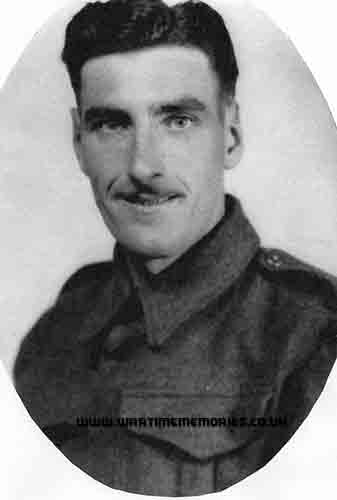 My Grandfather Peter Williams was born 25th January 1915, we believe at New Tyle, Scotland. He originally joined the Welsh Guards but transferred to the Parachute Regiment.
He unfortunately died at only 32 years old from tuberculosis on the 15th January 1948.
My Mum Diann and her sister Joy know very little about him. He died when my Mum was only 7 years old. My Nan (now 93 years old with severe dementia) was not married to him and due to this fact has refused to tell us anything about him. This is very distressing for my Mum (now 73) who has spent her whole life wondering about him and her heritage and also for myself and my own daughter knowing nothing of the life of my Grandfather.
We do know he was married to a Margaret Lewis briefly prior to my Mum being born.
If anyone could help me with the smallest of information it would be very kind. I just want to help my Mum find some information regarding her Dad.
2733995 Corporal Peter Charles Williams served with the 10th Battalion, the Parachute Regiment during WW2. He died after war death records ceased from Tuberculosis which means he would not appear on the Commonwealth war Graves Records.
|
Spr. Robert Hurd 270th Field Coy Royal Engineers (d.31st Mar 1943) Robert Hurd married my grandma Dorothy in April 1942.
We understood that he was blown up on a bridge in Burma but this was only a family story. His grave is located in the Tarbarka Ras Rajel War Cemetery in Tunisia, so he must have been killed in North Africa.
He was only 26 years old and hadn't even been married to my grandma for a year when he died.
He had no children with my grandma.
|
Tpr. Buchan Bruce Dundas "Buck" Taylor No.3 Trp., B Sqdn. 2nd Lothians and Border Horse On 18th of April 1939, Buchan Taylor (my father) joined the Territorial Army in Edinburgh as B. Taylor and was accepted into the 19th Armoured Car Company, Royal Tank Regiment (T.A.), Lothian and Border Horse. He was 19 years old. Weight: 182 lbs.and Height: 5ft 11in.
Because Buchan spoke fluent German, he served in the Squadron Leaders tank of 3 Troop B Squadron, 2nd Lothians and Border Horse in 26th Armoured Brigade, 6th Armoured Division, V Corps, British First Army during Operation Torch (initially called Operation Gymnast). In March, when the 2nd Lothians and Border Horse upgraded to Sherman tanks, the 6th Division then came under IX Corp. Once Bizerte was taken Operation Torch would come to an end, but Bizerte was not taken until May 1943.
Buchan said he had two tank commanders in North Africa in B Squadron. In the Crusader tanks it was Major G.E. Simpson, and later in the Sherman tanks it was Major Anstruther-Gray (aka Baron Kilmany, MP). It was Anstruther-Gray that wrote to his mother during the war to inform her that Buchan had been seriously wounded, and also who corresponded with mum (Veronica, nee Henry) after dad had died so that she was able to get the War Widows pension. Buchan was wounded when the tank was hit overlooking Goubellat Plain. He and Trooper John Hunter were seriously hurt. Buchan dragged Jack out of the turret but he died of wounds the following day. See the British IWM catalogue photo# NA 2357 taken by the No. 2 Army Film & Photographic Unit.
The following are the battle honours of the 2nd Lothians, as part of the 6th Armoured Division in North Africa, that dad participated in:
- 18 January - 25 January 1943: Bou Arada
- 7 April - 11 April 1943: Fondouk
- 22 April - 26 April 1943: El Kourzia
- 5 May - 12 May 1943: Battle of Tunis
Although it is not in the battle honours, he also fought in the battles for Kasserine Pass and Thala.
G.W. Martin, who wrote Driver Advance, was in his tank troop, there were 3 tanks per troop in 1942/43. Buchan's Sherman was destroyed by a volley of 4 rounds from German 88s and a group of Panzers that included MkIVs and a Tiger tank. It was within 100 meters of British N.W. Grid Reference 7317 [more accurately 730175], French Grid Reference 230125 (36° 29.310'N 9° 44.655'E.). At around 4:30 pm, 23rd og April 1943, his Sherman tank may have initially been hit by an armour piercing shell (Peenemunder Pfeilgeschosse) that struck the tank, stopped it in its tracks and actually sent it backwards enough for it to be almost out of sight behind the hill that it was going over. Both tracks had been blown off in the initial strike, and the driver's arm was blown off. Then it may have been struck by a high explosive (HE) round that they called molten lead, as it sprayed white hot metal fragments around the interior along with numerous flying splinters from the tank hull and equipment inside. One piece of white hot shrapnel almost severed 99% of Buchan’s right leg below the knee and splinters struck him in the centre of his right hand, between the ribs of his lower left chest, his groin and other places in his body. His right leg was hanging by a few shreds of tissue, which was cut away by a pair of scissors by the medics from Section 4 of the 165th Light Field Ambulance as he lay on the ground beside the tank. According to his medical record only three and a half inches of his right tibia stump remained.
The following is a chronology of the remainder of Buchan’s wartime service:
- 23rd April 1943 Battle Casualty recorded by, Unit Medical Officer. Regimental Aid Post - leg off (actually on battlefield) transferred to S.E.C.4, 165 Light Field Ambulance
then No.19 Casualty Clearing Station in state of shock. 24 yrs old.
- 24 April 1943 at 0630 hrs operated on including right leg, right hand, left loin.
- 27 April 1943 transferred to No.8 Casualty Clearing Station (2 days)
- 28 April 1943 Transferred to No. 71 General Hospital and operation on 29 April at 1400 hrs (4 days)
- 2 May 1943 Evacuated by stretcher to No. 36 General Hospital (5 days)
- 4 May 1943 Transferred to No. 31 General Hospital
- 7 May 1943 Evacuated by stretcher to No. 36 General Hospital (8 days)
- 14 May 1943 Travelled by hospital ship HMHS Amarapoora (9 days)
- 24 May 1943 Discharged from hospital ship for disembarkation to Shore Hospital as a cot case and admitted at Morriston Emergency Hospital, Swansea, Wales, SA6 6NL (15 days)
- 1943 Gogarburn, Scotland (34 days)
- 12 July 1943 Bangour Emergency Medical Services Hospital, Broxburn, West Lothian (101 days)
- 21 Oct 1943 Arrived midday at Gogarburn Hospital, Edinburgh (16 days)
- 9 Nov 1943 Castle Craig Auxiliary Hospital (14 days)
- 24 Nov 1943 Arrived midday at Gogarburn Hospital, Edinburgh (7 days)
- 30 Nov 1943 Castle Craig Auxiliary Hospital (21 days)
- 21 Jan 1944 Arrived midday at Gogarburn Hospital, Edinburgh (5 days)
- 26 Jan 1944 Limb-fitting treatment and discharged home
- 17 Mar 1944 First artificial limb fitted
- 22 Mar 1944 Discharged
- 2 Aug 1944 Admitted 3 pm to Edenhall (Ministry of Pensions) Hospital, Musselburgh (large shrapnel found deep in ends between 9th-10th left ribs). Operation on 14 August
- 31 Aug 1944 Discharged
In October 1944, Buchan enrolled as a veterinary student, his details are recorded as, Weight: 170 lbs., Height: 5ft 9 1/2in., Age: 27 yrs old.
|
Pte. Thomas Young 2nd Btn. Seaforth Highlanders 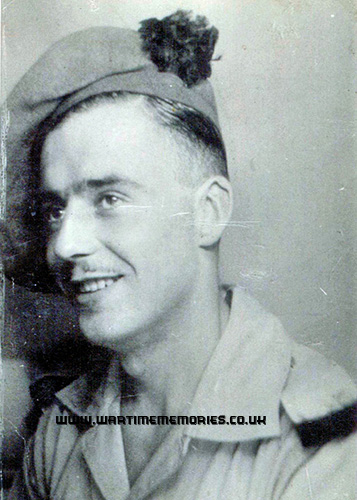 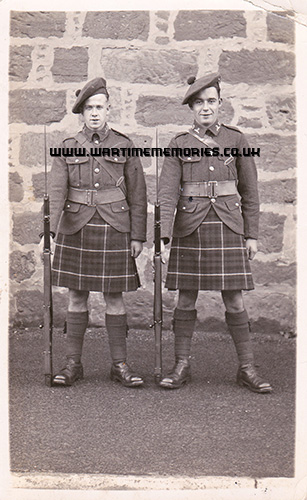 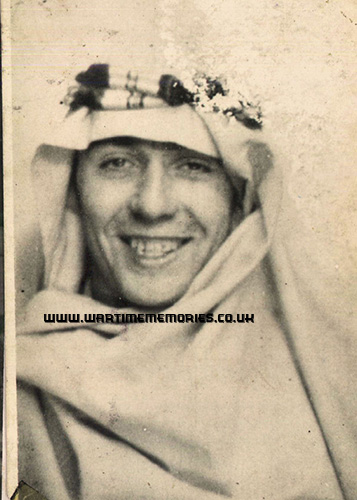 Tom Young, (my father) joined the Seaforth Highlanders on 11th of August 1939 and was initially posted to 7th Battalion.
In July/August 1940, he volunteered for the No.11 (Scottish) Commando and on 7th of September 1940 was accepted and went for further training on the Isle of Arran, before sailing to Egypt via Cape Town. He served with this Commando unit until August 1941, being involved in the Battle of Litani River, Lebanon in June 1941.
When the 11th Commando was disbanded, he volunteered for and was accepted into the Long Range Desert Group (LRDG) on 3rd of September 1941. He served with the LRDG until 19th of January 1943, mostly behind enemy lines.
He was then posted back to the 2nd Battalion, Seaforth Highlanders, in Libya and Tunisia and was involved in the Sicily landings, being wounded in the battle for Sferro Hills.
He then returned to the UK and was involved in Operation Overlord, being evacuated back to the UK and treated in a Glasgow Hospital.
Tom's medals include the Africa Star with 8th Army clasp, the Italy Star, and the France/Germany Star.
|
PFC. Steve R. "Biff" Mallinak II Corps The following is from a handwritten note by Steve Mallinak:
- Queen Elizabeth, board ship 3 Jan 43
- Sailed 6 Jan 43
- Arrived 8 pm, 11 Jan 43 at Gorik, Scotland
- England Liverpool
- Monarch of Bermuda, board ship 6 Feb 43
- Arrived 13 Feb 43 at Oran, N. Africa
- Azer Meeker
- Board ship 2 July 43
- Sailed 5 July 43, 8am
- Arrived 10 July 43, 7am, at Gela, Sicily
|
Pte. Frank Holroyd 1st Btn. Parachute Regiment (d.5th Feb 1943) All we know is that my grandfather's uncle Frank Holroyd is believed to have been at Dunkirk and died in Tunisia on the 5th of February 1943, supposedly married to a woman named Elizabeth from Glasgow though this was unknown to the family.
|
Sgt. Arthur Lovell 4th County of London Yeomanry Arthur Lovell served from 1931 to 1938 with the 11th Hussars in Palestine. Following his 6 years of service he was transferred to the Army Reserves in 1938.
He was recalled at the outbreak of war in Sept 1939 and was assigned to the 4th County of London Yeomanry (Sharpshooters). He returned to the Middle East with the 4th CLY in September 1941 and became part of the 7th Armoured Division (The Desert Rats).
The 4 CLY were involved in almost continuous fighting from their arrival until the end of the North Africa Campaign. The regiment particularly distinguished themselves in the Second Battle of El Alamein (23 October to 11 November 1942) and took part in the subsequent advance into Tunisia (17 November 1942 to 13 May 1943). This three month campaign was against the more experienced German Afrika Korps led by Gen. Erwin Rommel (The Desert Fox). By this time he had been promoted to Sergeant and was a tank commander.
During action on April 6th, 1943, Arthur was wounded. After several weeks in hospital he rejoined the regiment. The 4th County of London Yeomanry did not take part in the invasion of Sicily but landed in Italy in September 1943. They participated in the Capture of Naples and the crossing of the Volturno. In December 1943, the regiment left Italy for the United Kingdom where it prepared for the upcoming invasion of North West Europe.
The 7th Armoured Division, arrived in Normandy towards the end of D-Day 6th of June, 1944. Its first combat was a day later with 22nd Armoured Brigade supporting the 50th Division at Tilly-sur-Seulles. Combat continued in the area against the German Panzer Lehr Division the next day. Their next operation was Perch which would lead to the ill-fated clash with the Panzer Lehr and 101. Schwere SS-Panzerabteilung at Villers-Bocage. On June 13, the British launched Operation Perch, an attempt to encircle the Panzer-Lehr-Division. The Desert Rats advanced on Villers-Bocage. A company of the Rifle Brigade and a squadron of Cromwell tanks belonging to the Sharpshooters was sent on ahead to Hill 213, a mile east of the town. This force was ambushed by a detachment of Tiger tanks from 2nd Kompanie, 101st SS Heavy Panzer Battalion and a single Tiger, commanded by SS-Obersturmfuhrer Michael Wittman, destroyed the six tanks of CLY's Regimental Headquarters Troop before his own Tiger was destroyed.
The small force of the Rifle Brigade and Sharpshooters, now trapped on Hill 213, was eventually overrun.
Arthur was taken prisoner and spent the rest of the war as a POW finally at Stalag 357 at Fallingsbostel. The camp was liberated on April 16th 1945 by the 11th Hussars, Arthur's original regiment.
|
Pte. Charles Edward Morrison 17th Field Artilley Group 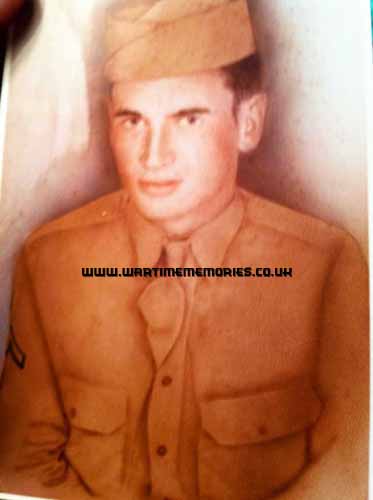 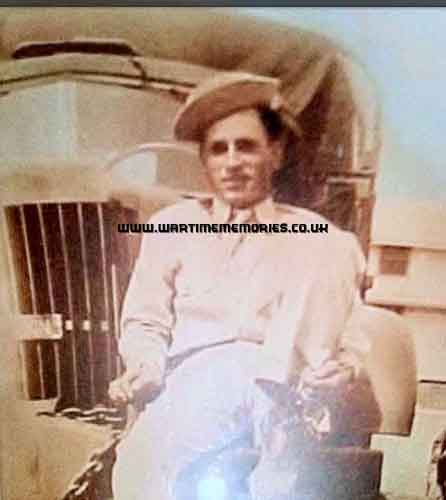 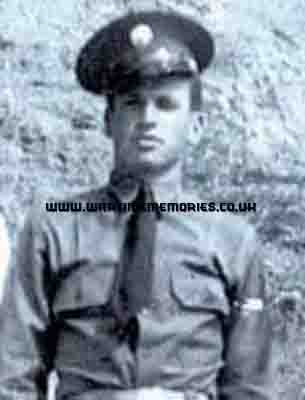 My Uncle, Ed Morrison, was stationed in Tunisia, North Africa with the 17th Field Artillery Group. These undermanned Allies were overwhelmed by a large Nazi contingent under the Leadership of German Field Marshall Erwin Rommel and his Nazi Afrika Korps.
Ed was captured by the German attack force on 14th of February 1943. After several relocations, including attacks on German aircraft he was in by American pilots unaware their fellow soldiers were on board. These men were also marched mercilessly in sub-zero temperatures with little food or clothing. He and his fellow prisoners, spent the remainder of World War 2 surviving in the inhumane confines of P.O.W. camps USA KD01, Stalags 7A, 3A and Nazi Stalag 3B located in Furstenberg, Germany near the Polish border.
Ed and his Brothers in Arms spent over two years incarcerated. He saw many horrors of war, he was punished, in one instance, caught,with potato peelings in his pocket to help a fellow soldier who was sick, to a stint in solitary confinement.
Uncle Ed survived Stalag 3b, he came home to Middlesboro and worked for 40 years at Kentucky Utilities and raising his wonderful family. My Uncle is a warm, kind, gentle husband, father, brother, uncle and friend to many. He is a hero to me, although he would always say " The heroes are the ones who didn't come home".
|
Sgt. Chalmer Edwin "Pork" Bonnicksen Co L. 168th Infantry Regiment My uncle, Chalmer Bonnicksen, was a POW at Stalag 3B. He was captured in Tunisia on 17th of Feb 1943. The date of capture happened to be his 30th birthday. I believe he spent his entire time as a POW at Stalag 3B and was liberated on 26th of May 1945.
Uncle Pork was a sergeant with the 34th Infantry Division, 168th Infantry Regiment, Co L. I know very little about his time as a POW. What I do remember is my father telling me that letters back and forth were semi-regular and the Red Cross was getting at least some care packages through. The conditions did seem to have damaged his vision which proved a hardship for a man who liked to read as much as he did. Upon his return, my father told me he looked like a scarecrow, he stood 6'4" and certainly wasn't carrying any extra weight after two years in a camp.
He came back to Iowa and spent the rest of his life drilling and repairing wells around NW Iowa. He died of a heart attack at the young age of 54 in 1967.
|
Able Sea. Arthur "Snowy" Hardwick HMS Manchester When HMS Manchester was sunk in the Med in October 1942 Arthur Hardwick told me he had to dash up and down the deck to look for a life belt as he could not swim. Having found one he jumped in and was strafed by fighters but luckily was not wounded and managed to reach the Tunisian shore which was only a few hundred yards away.
In the prison camp he remembers one fellow crew member tried to escape and was shot dead. He and his mates received Red Cross parcels from home which kept them going but even so they lost a lot of weight. After six months or so their camp was overrun by the British Army and they were liberated and repatriated back to England. After some leave boarded the Queen Mary liner to Boston USA and had to wait six weeks for the completion of their new ship. This was probably the best time of his life as the American people were incredibly generous and treated them like the heroes they were.
|
Recomended Reading.Available at discounted prices.
|
|
|












